-
 Bitcoin
Bitcoin $83,649.7703
-1.06% -
 Ethereum
Ethereum $1,818.4708
-2.72% -
 Tether USDt
Tether USDt $1.0000
0.01% -
 XRP
XRP $2.0495
-3.21% -
 BNB
BNB $597.8591
-1.20% -
 Solana
Solana $118.6021
-5.26% -
 USDC
USDC $1.0000
0.01% -
 Dogecoin
Dogecoin $0.1642
-3.52% -
 Cardano
Cardano $0.6526
-2.99% -
 TRON
TRON $0.2343
-0.56% -
 Toncoin
Toncoin $3.7346
-7.00% -
 UNUS SED LEO
UNUS SED LEO $9.4260
0.63% -
 Chainlink
Chainlink $12.9796
-3.63% -
 Stellar
Stellar $0.2617
-1.79% -
 Avalanche
Avalanche $18.3920
-4.15% -
 Sui
Sui $2.3105
-2.61% -
 Shiba Inu
Shiba Inu $0.0...01222
-0.74% -
 Hedera
Hedera $0.1630
-1.67% -
 Litecoin
Litecoin $83.6143
1.85% -
 Polkadot
Polkadot $4.0068
-2.05% -
 MANTRA
MANTRA $6.3564
2.37% -
 Bitcoin Cash
Bitcoin Cash $306.7380
0.76% -
 Bitget Token
Bitget Token $4.5736
-0.36% -
 Dai
Dai $1.0001
0.01% -
 Ethena USDe
Ethena USDe $0.9998
0.00% -
 Pi
Pi $0.6284
-6.81% -
 Hyperliquid
Hyperliquid $11.9330
-10.11% -
 Monero
Monero $213.7810
-0.49% -
 Uniswap
Uniswap $5.9757
-2.02% -
 Aptos
Aptos $5.2294
-1.01%
How does MetaMask wallet sign messages?
MetaMask simplifies message signing with a user-friendly interface, using private keys to create verifiable signatures for identity and transaction authenticity.
Apr 02, 2025 at 06:49 pm
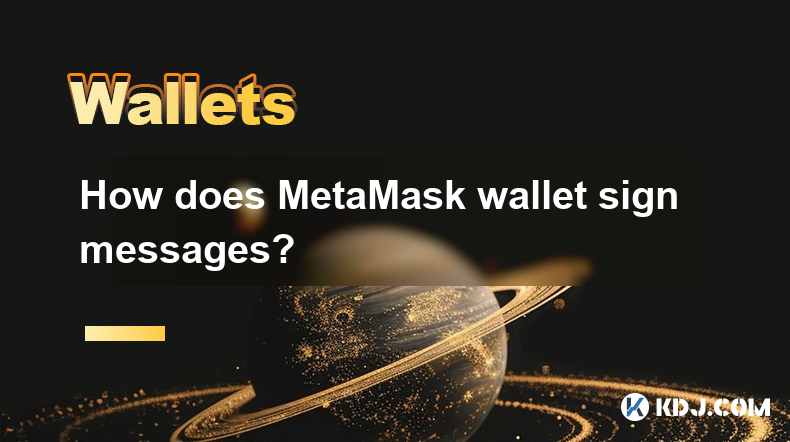
MetaMask, a popular cryptocurrency wallet, offers a secure way for users to sign messages. This process is essential for verifying identity and ensuring the authenticity of transactions within the blockchain ecosystem. When a user signs a message using MetaMask, they are essentially using their private key to create a cryptographic signature. This signature can be verified by anyone with access to the corresponding public key, ensuring that the message indeed came from the owner of that address. The signing process involves several steps, which MetaMask handles seamlessly behind the scenes.
Understanding the Basics of Message Signing
Before diving into how MetaMask signs messages, it's crucial to understand the basics of message signing in the context of cryptocurrencies. Message signing is a cryptographic technique that allows a user to prove ownership of a particular address without revealing their private key. When a message is signed, the private key is used to generate a unique signature. This signature can then be verified using the public key associated with the address. This process is fundamental to many blockchain operations, including transaction authorization and identity verification.
The Role of Private and Public Keys
In the world of cryptocurrencies, every wallet has a pair of keys: a private key and a public key. The private key is kept secret and is used to sign transactions and messages. The public key, on the other hand, is shared openly and is used to verify signatures. When you sign a message with MetaMask, your private key is used to create a signature. Anyone with your public key can then use it to verify that the signature is valid and that the message indeed came from your address.
How MetaMask Handles Message Signing
MetaMask simplifies the process of signing messages by integrating it into its user-friendly interface. When a user wants to sign a message, they can do so directly from the MetaMask extension or mobile app. Here’s how it works:
- Initiate the Signing Process: The user clicks on the "Sign" button within MetaMask, which prompts them to enter the message they wish to sign.
- Message Hashing: MetaMask hashes the message using a cryptographic hash function, typically SHA-256. This hash is what will be signed, not the original message.
- Signing with Private Key: The hashed message is then signed using the user's private key. This step creates a unique signature that can be verified with the corresponding public key.
- Display and Confirmation: MetaMask displays the signature to the user, who can then copy it and share it as needed. The user must confirm the action to proceed with signing.
Verification of Signed Messages
Once a message has been signed, anyone can verify its authenticity using the signer's public key. This process involves:
- Obtaining the Public Key: The verifier needs access to the public key of the address that supposedly signed the message.
- Hashing the Message: The verifier hashes the original message using the same hash function (e.g., SHA-256) used during signing.
- Verifying the Signature: Using the public key, the verifier checks if the signature matches the hash of the message. If it does, the signature is valid, confirming that the message was indeed signed by the owner of the address.
Security Considerations in Message Signing
While signing messages with MetaMask is straightforward, it's important to consider the security implications. Since the private key is used to sign messages, it's crucial to keep it secure. Here are some security tips:
- Protect Your Private Key: Never share your private key with anyone. MetaMask stores your private key encrypted on your device, but you should always be cautious.
- Use Strong Passwords: Ensure that your MetaMask account is protected with a strong, unique password.
- Beware of Phishing: Be cautious of phishing attempts that may try to trick you into signing malicious messages or revealing your private key.
- Regularly Update MetaMask: Keep your MetaMask software up to date to benefit from the latest security enhancements.
Practical Applications of Message Signing
Message signing with MetaMask has several practical applications within the cryptocurrency ecosystem. Some of these include:
- Identity Verification: Users can prove ownership of an address by signing a message with their private key. This is often used in online forums or social media to verify identity.
- Transaction Authorization: Some decentralized applications (dApps) require users to sign messages to authorize transactions or other actions.
- Digital Signatures: Signed messages can serve as digital signatures for documents or agreements, ensuring their authenticity and integrity.
- Voting and Governance: In decentralized governance systems, users may need to sign messages to cast votes or participate in decision-making processes.
Technical Details of the Signing Process
To delve deeper into the technical aspects of how MetaMask signs messages, it's important to understand the underlying cryptographic algorithms. MetaMask uses the Elliptic Curve Digital Signature Algorithm (ECDSA) for signing messages. ECDSA is widely used in blockchain technologies due to its efficiency and security. Here's a brief overview of the process:
- Key Generation: When a user creates a new wallet, MetaMask generates a pair of keys using the secp256k1 elliptic curve.
- Message Hashing: The message to be signed is hashed using SHA-256, producing a fixed-size hash.
- Signature Generation: Using the private key and the hash, MetaMask generates a signature using ECDSA. This signature consists of two components, typically referred to as r and s.
- Signature Verification: The signature can be verified using the public key and the original message hash. If the verification succeeds, it confirms the authenticity of the signature.
User Experience with MetaMask Message Signing
MetaMask prioritizes user experience by making the message signing process as intuitive as possible. Users are guided through each step with clear instructions and visual cues. Here’s what the process looks like from a user’s perspective:
- Accessing the Signing Feature: Users can access the signing feature from the MetaMask interface, typically found under the "Sign" or "Message" section.
- Entering the Message: The user enters the message they wish to sign into a provided text field.
- Review and Confirmation: Before signing, MetaMask displays the message and asks for user confirmation. This step ensures that users are aware of what they are signing.
- Signature Display: Once signed, MetaMask displays the signature in a readable format, allowing users to easily copy and share it.
Integration with Decentralized Applications (dApps)
MetaMask’s message signing capabilities are particularly useful for interacting with decentralized applications (dApps). Many dApps require users to sign messages to authenticate their identity or authorize actions. Here’s how MetaMask integrates with dApps for message signing:
- dApp Requests: When a dApp requires a user to sign a message, it sends a request to MetaMask.
- User Interaction: MetaMask prompts the user to review and sign the message, ensuring they are aware of the action they are taking.
- Secure Signing: The signing process is handled securely within MetaMask, using the user’s private key.
- Result Communication: Once signed, the signature is sent back to the dApp, which can then verify it and proceed with the requested action.
Common Use Cases for Message Signing
Message signing with MetaMask is used in various scenarios within the cryptocurrency ecosystem. Some common use cases include:
- Verification of Ownership: Users can prove they own a particular address by signing a message with their private key.
- Authorization of Transactions: Some platforms require users to sign messages to authorize specific transactions or actions.
- Participation in Governance: In decentralized governance systems, users may need to sign messages to vote or participate in decision-making processes.
- Digital Agreements: Signed messages can serve as digital signatures for agreements or contracts, ensuring their authenticity and integrity.
Troubleshooting Common Issues
While MetaMask makes message signing straightforward, users may encounter some issues. Here are some common problems and their solutions:
- Signature Mismatch: If a signature fails to verify, ensure that the original message and the public key used for verification are correct.
- Private Key Access: If MetaMask prompts for a private key, ensure you are using the official MetaMask software and not a phishing site.
- Outdated Software: Ensure your MetaMask software is up to date to benefit from the latest security and functionality improvements.
- Network Issues: Sometimes, network connectivity problems can affect the signing process. Check your internet connection and try again.
Future Developments and Enhancements
As the cryptocurrency ecosystem evolves, so too will the capabilities of MetaMask. Future enhancements may include:
- Enhanced Security Features: Improved security measures to protect private keys and signing processes.
- Integration with More dApps: Broader integration with decentralized applications, making message signing even more seamless.
- User Interface Improvements: Continued enhancements to the user interface to make the signing process even more intuitive.
- Support for New Cryptographic Algorithms: Potential support for new or updated cryptographic algorithms to enhance security and efficiency.
Common Questions Related to MetaMask Wallet Message Signing
Q1: What is message signing in the context of MetaMask?
A1: Message signing in MetaMask involves using your private key to create a cryptographic signature for a message. This signature can be verified by anyone with your public key, confirming that the message came from your address.
Q2: How does MetaMask ensure the security of message signing?
A2: MetaMask ensures the security of message signing by storing your private key encrypted on your device and requiring user confirmation before signing. It also uses established cryptographic algorithms like ECDSA for secure signing.
Q3: Can I sign messages with MetaMask on both desktop and mobile?
A3: Yes, MetaMask supports message signing on both its desktop extension and mobile app, providing a consistent user experience across platforms.
Q4: What are some practical uses of message signing with MetaMask?
A4: Practical uses include identity verification, transaction authorization, digital signatures for agreements, and participation in decentralized governance systems.
Q5: What should I do if I encounter issues with message signing in MetaMask?
A5: If you encounter issues, ensure you are using the latest version of MetaMask, check your internet connection, and verify that the message and public key used for verification are correct. If problems persist, consider reaching out to MetaMask support.
Disclaimer:info@kdj.com
The information provided is not trading advice. kdj.com does not assume any responsibility for any investments made based on the information provided in this article. Cryptocurrencies are highly volatile and it is highly recommended that you invest with caution after thorough research!
If you believe that the content used on this website infringes your copyright, please contact us immediately (info@kdj.com) and we will delete it promptly.
- Ernst & Young (EY) Unveils Nightfall_4, a Zero-Knowledge (ZK) Rollup Architecture
- 2025-04-03 16:45:13
- Investing in racehorses has traditionally been the preserve of the super wealthy and elite
- 2025-04-03 16:45:13
- Bitcoin price struggles on its daily charts as crypto market liquidations cross $500M.
- 2025-04-03 16:40:12
- TRON Founder Justin Sun Accuses First Digital Trust (FDT) of Insolvency
- 2025-04-03 16:40:12
- Coin Master Free Spins Links April 3, 2025
- 2025-04-03 16:35:13
- Ripple Integrates Its Newly Released Stablecoin RLUSD into Its Flagship Payments Solution
- 2025-04-03 16:35:13
Related knowledge
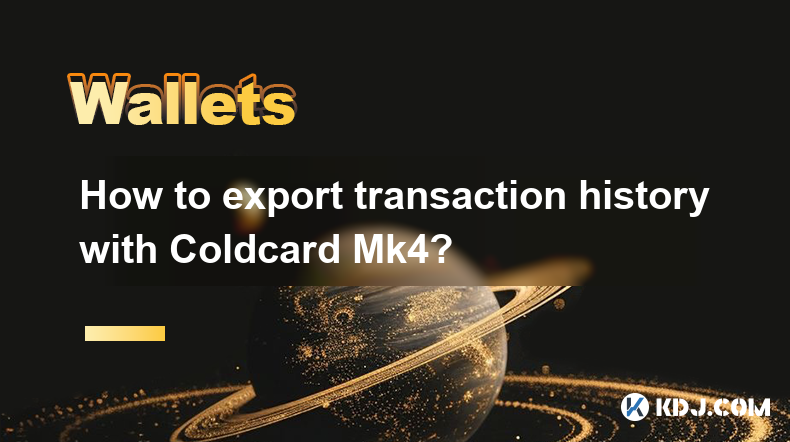
How to export transaction history with Coldcard Mk4?
Apr 03,2025 at 02:56pm
Introduction to Coldcard Mk4The Coldcard Mk4 is a highly secure hardware wallet designed specifically for Bitcoin. It is known for its robust security features, making it an ideal choice for users who prioritize the safety of their cryptocurrency. One of the essential functionalities of any hardware wallet is the ability to manage and export transaction...
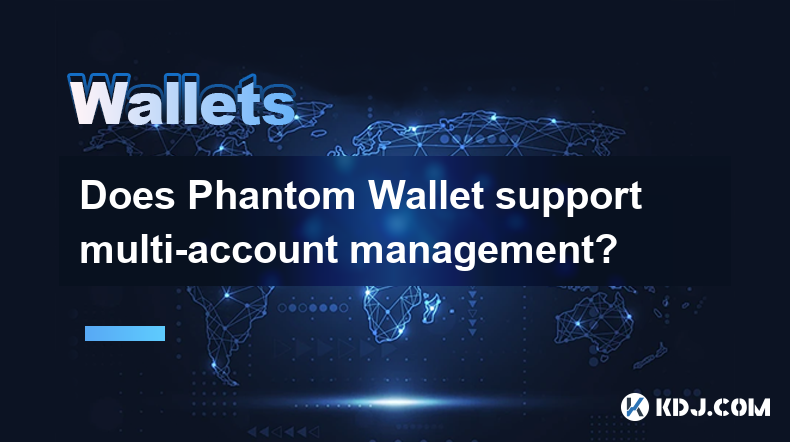
Does Phantom Wallet support multi-account management?
Apr 03,2025 at 02:49pm
Introduction to Phantom WalletPhantom Wallet is a popular cryptocurrency wallet primarily used for managing Solana-based assets. It's known for its user-friendly interface and robust security features. As the crypto space evolves, users are increasingly looking for wallets that can handle multiple accounts seamlessly. This article explores whether Phant...
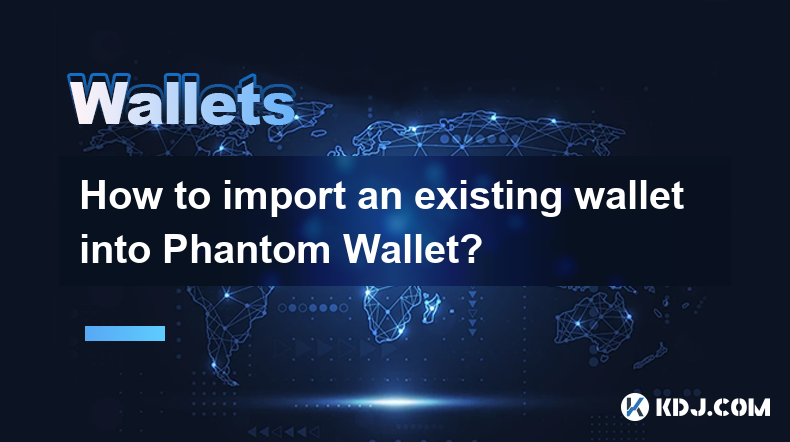
How to import an existing wallet into Phantom Wallet?
Apr 03,2025 at 02:15pm
Importing an existing wallet into Phantom Wallet is a straightforward process that allows users to manage their cryptocurrency assets seamlessly. Phantom Wallet, a popular non-custodial wallet for Solana and other blockchains, supports importing wallets through various methods, including seed phrases and private keys. This guide will walk you through th...
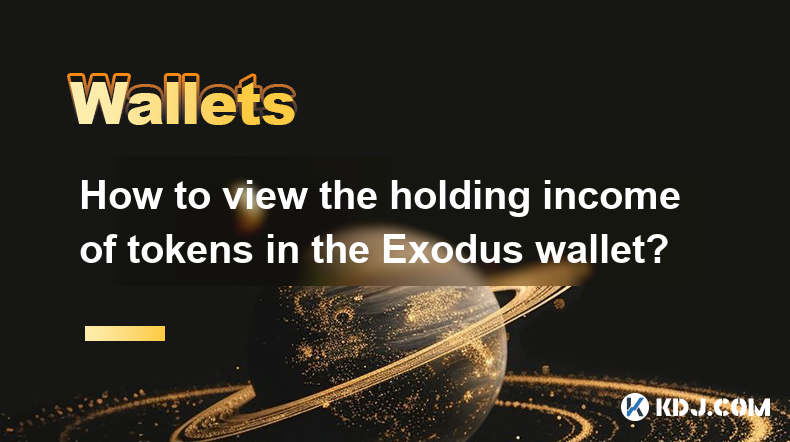
How to view the holding income of tokens in the Exodus wallet?
Apr 03,2025 at 04:28pm
Managing your cryptocurrency portfolio effectively requires a clear understanding of your holding income. If you're using the Exodus wallet, you might be curious about how to view the holding income of your tokens. This article will guide you through the process step-by-step, ensuring you can track your earnings with ease. Understanding Holding Income i...
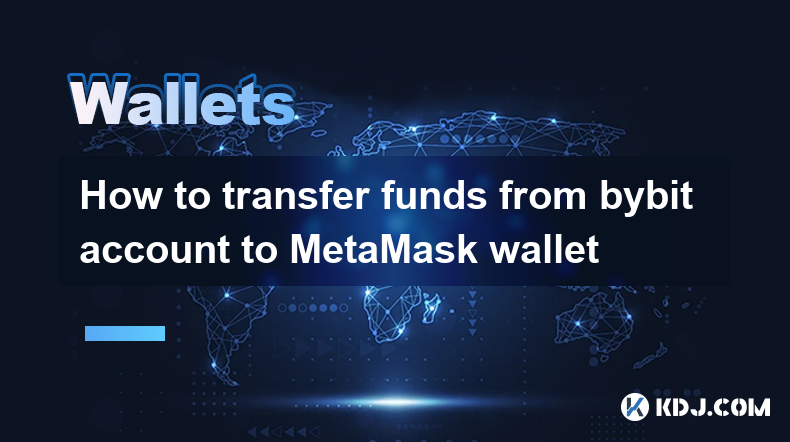
How to transfer funds from bybit account to MetaMask wallet
Apr 03,2025 at 11:41am
Transferring cryptocurrency from your Bybit account to your MetaMask wallet is a common operation. This is essentially a process of withdrawing money from the exchange to your personal wallet address.Please be sure to follow the following steps carefully, especially regarding the selection of network (chain). Choosing the wrong network will lead to asse...
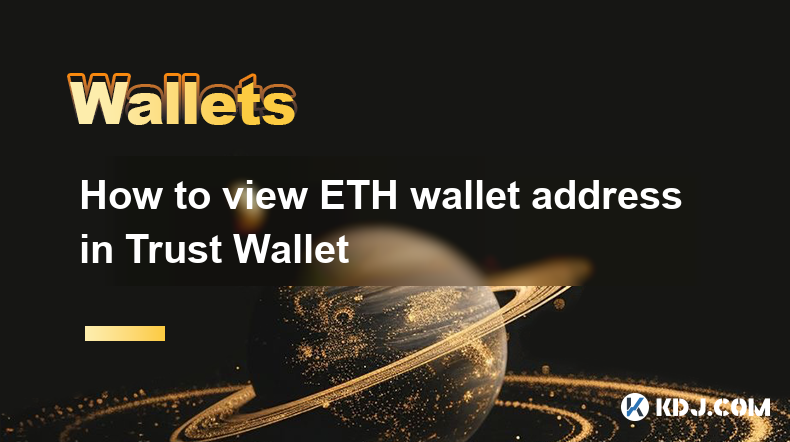
How to view ETH wallet address in Trust Wallet
Apr 02,2025 at 10:56pm
Managing your Ethereum (ETH) wallet address is crucial for anyone involved in the cryptocurrency space, especially when using popular mobile wallets like Trust Wallet. This guide will walk you through the process of viewing your ETH wallet address in Trust Wallet, ensuring you can confidently engage in transactions, receive funds, and manage your digita...

How to export transaction history with Coldcard Mk4?
Apr 03,2025 at 02:56pm
Introduction to Coldcard Mk4The Coldcard Mk4 is a highly secure hardware wallet designed specifically for Bitcoin. It is known for its robust security features, making it an ideal choice for users who prioritize the safety of their cryptocurrency. One of the essential functionalities of any hardware wallet is the ability to manage and export transaction...

Does Phantom Wallet support multi-account management?
Apr 03,2025 at 02:49pm
Introduction to Phantom WalletPhantom Wallet is a popular cryptocurrency wallet primarily used for managing Solana-based assets. It's known for its user-friendly interface and robust security features. As the crypto space evolves, users are increasingly looking for wallets that can handle multiple accounts seamlessly. This article explores whether Phant...

How to import an existing wallet into Phantom Wallet?
Apr 03,2025 at 02:15pm
Importing an existing wallet into Phantom Wallet is a straightforward process that allows users to manage their cryptocurrency assets seamlessly. Phantom Wallet, a popular non-custodial wallet for Solana and other blockchains, supports importing wallets through various methods, including seed phrases and private keys. This guide will walk you through th...

How to view the holding income of tokens in the Exodus wallet?
Apr 03,2025 at 04:28pm
Managing your cryptocurrency portfolio effectively requires a clear understanding of your holding income. If you're using the Exodus wallet, you might be curious about how to view the holding income of your tokens. This article will guide you through the process step-by-step, ensuring you can track your earnings with ease. Understanding Holding Income i...

How to transfer funds from bybit account to MetaMask wallet
Apr 03,2025 at 11:41am
Transferring cryptocurrency from your Bybit account to your MetaMask wallet is a common operation. This is essentially a process of withdrawing money from the exchange to your personal wallet address.Please be sure to follow the following steps carefully, especially regarding the selection of network (chain). Choosing the wrong network will lead to asse...

How to view ETH wallet address in Trust Wallet
Apr 02,2025 at 10:56pm
Managing your Ethereum (ETH) wallet address is crucial for anyone involved in the cryptocurrency space, especially when using popular mobile wallets like Trust Wallet. This guide will walk you through the process of viewing your ETH wallet address in Trust Wallet, ensuring you can confidently engage in transactions, receive funds, and manage your digita...
See all articles























































































